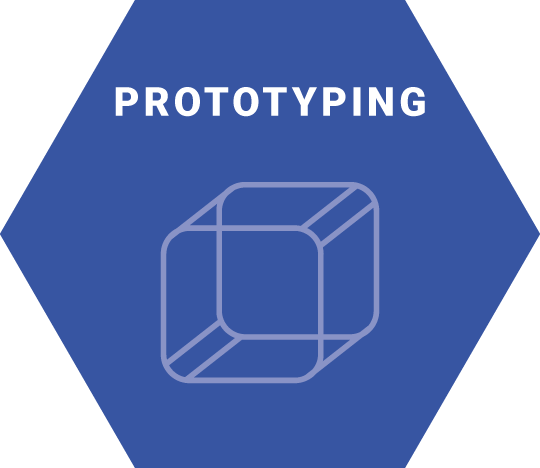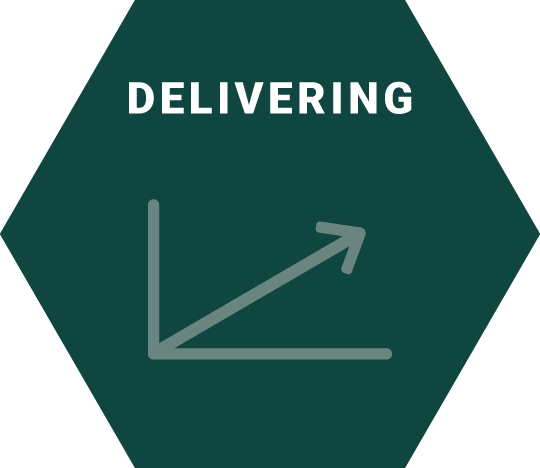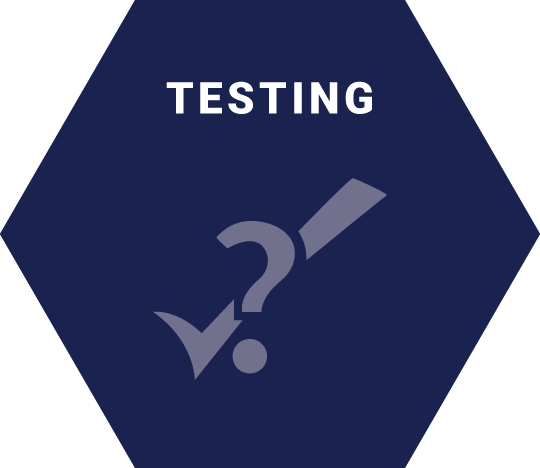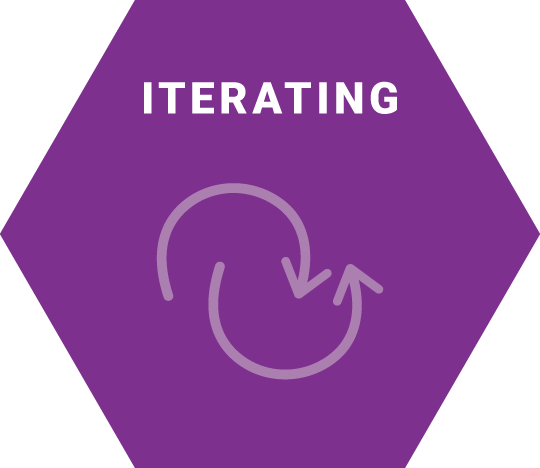| Module | Methods | Who | Where | When |
|---|---|---|---|---|
|
|
Prototype Builder to refine concept posters from Phase Two into specific prototypes for testing. This may include prototypes of communication materials, a budget proposal, storyboards of the experience, etc. |
Core team members (core community representatives, CPS and Chicago team). | Core team project space (physical or virtual). | Week 1 One hour, plus any time needed to develop the prototype. |
|
|
Communicating through Storytelling to Create a story of your proposed solution that you can use to describe how the concept was created, tested and refined, and to gain support from people in the community and other key stakeholders. |
Core team members (core community representatives, CPS and Chicago team). | Core team project space (physical or virtual). | Week 2 Multiple days. |
|
|
Think Aloud to test your prototype of the plan and get feedback on your assumptions and value assessments. |
Core team members (core community representatives, CPS and Chicago team); 6-8 community members from impacted communities; 2-3 key stakeholders responsible for approval or implementation. | Virtual sessions; community establishments; member households. | Week 3 45-minute planning session and eight to 12 30-minute tests, one hour debrief every three tests. |
|
|
Iterating to use the feedback you gained during testing to evolve your plan into a more successful one. |
Core team members (core community representatives, CPS and Chicago team). | Core team project space (physical or virtual). | Week 4 One to three hours. |
The objective of this plan is to test and refine concepts for proposals. To do this, build prototypes and test with key stakeholders, iterating on each concept as you go through the plan. By doing this, you will be ready to create a plan with confidence.
|
Who:Core team members |
Where:Core team project space (physical or virtual) |
When:Week: 1 |
Supplies Needed:
|
Prototype / Prototype Builder
In groups of 3-4, complete the Prototype Builder in order to refine the concept posters into more specific prototypes for testing. This may include prototypes of communication materials, budget proposal, storyboards of the experience, etc.
- Divide participants into small groups of 3-4 people; maintaining the same groups if this activity follows a Concept Poster exercise.
- Provide groups with a separate work space, a copy of their Concept Poster, copies of the Prototype Builder template, markers, and plenty of scratch paper and sticky notes.
- Each group selects the one or two key assumptions from their Concept Poster that are most crucial to the success of their concept.
- Discuss what could go wrong if any of their assumptions are invalid.
- Capture the potential impact of their assumptions by completing the sentence “If this assumption is incorrect…”
- Review the different types of prototypes and choose the most appropriate prototype to build.
- Write a description of the prototype they plan to build.
- Debrief with the larger group and vote on which prototypes should be built and tested.
- Build the first version of the selected prototype.
LEARN MORE ABOUT PROTOTYPE BUILDER
|
Who:Core team members |
Where:Core team project space (physical or virtual). |
When:Week: 2 |
Supplies Needed:
|
Delivering / Communicating through Storytelling
Create a story of your proposed solution that you can use to describe how the concept was created, tested and refined, and to gain support from people in the community and other key stakeholders.
- Assemble specific stories that most closely illustrate the problem your concept addresses, and reveal who is encountering the stated problem.
- Use sentiments and quotes from your interviews, observations or tests to highlight challenges.
- Choose one or two of your assembled stories to use as an example that best illustrates the problem.
- Refer back to outputs from previous exercises to look for real life evidence of the problem such as quotes or images.
- Add one or two compelling facts that demonstrate how pervasive the problem is to the community.
- Show your prototyped solution in a big, bold, crisp image.
- Tell the story of a person using the solution.
- Use photos, images, or illustrations as much as possible rather than text or bullet points.
- Describe one or two key benefits that your proposed solution will offer.
- Show evidence that the solution really works to alleviate the pain of the original problem.
- Reproduce the frames in a polished presentation format.
|
Who:
|
Where:Community establishments, households and/or virtual sessions |
When:Week: 3 |
Supplies Needed:
|
Testing / Think Aloud
Conduct eight to 12 Think Aloud tests with 6 to 8 community members from impacted communities and 2 to 4 key stakeholders responsible for approval or implementation of the proposal. By doing this, you will be able to validate or challenge your assumptions, and thus refine your proposed solution(s).
- Fill out the Testing your assumptions worksheet by following the steps below.
- Give your test a name and a brief description.
- List the key assumptions you intend to test.
- Articulate specific questions you intend to target with your test.
- Select the type of prototype you will use based on the prototype you made during Prototype Builder.
- Define who will participate in your test.
- Identify how many people will participate in your test.
- Select “Think Aloud” as the type of test you will conduct.
- Determine where you will conduct your test.
- Decide what assumptions you will be testing and create a testing plan with your team, assigning roles and responsibilities.
- Test your prototype with one person at a time.
- Introduce yourself and your team, and set the ground rules for the test.
- Provide a brief overview of the problem, name of the concept, and the solution you are imagining.
- Introduce the person to the prototype you created and prompt them to complete a specific task or goal.
- Give them only the first thing they would encounter towards completing the task you assigned.
- Ask the person to interact with your prototype as they would interact with the real product or service.
- Reveal only the next part of the prototype based on their actions.
- Your only role is to keep them talking. Resist the temptation to jump in to help or explain.
- Avoid leading questions.
- Record and reflect on your findings using Iterating.
|
Who:Core team members |
Where:Core team project space |
When:Week: 4 |
Supplies Needed:
|
Iterating
Complete 1-3 Iterating worksheets with the core project team in order to evolve your Prototype(s) based on feedback and insights from the Think Aloud tests.
- Provide groups with a separate work space, a copy of their iterating worksheet, markers, and sticky notes.
- Describe in a few sentences what you did and what you were trying to accomplish with the activity.
- Reflect on who you engaged.
- Capture 1 to 5 things that surprised you and that led to new learnings.
- Record what you will change or do differently next time.
- Decide and write down what you will do next.
- Debrief with the larger group to share and align on these reflections.
- Plan to repeat these activities at least once or twice until you are satisfied with the outcomes and feel ready to move on to another activity.



